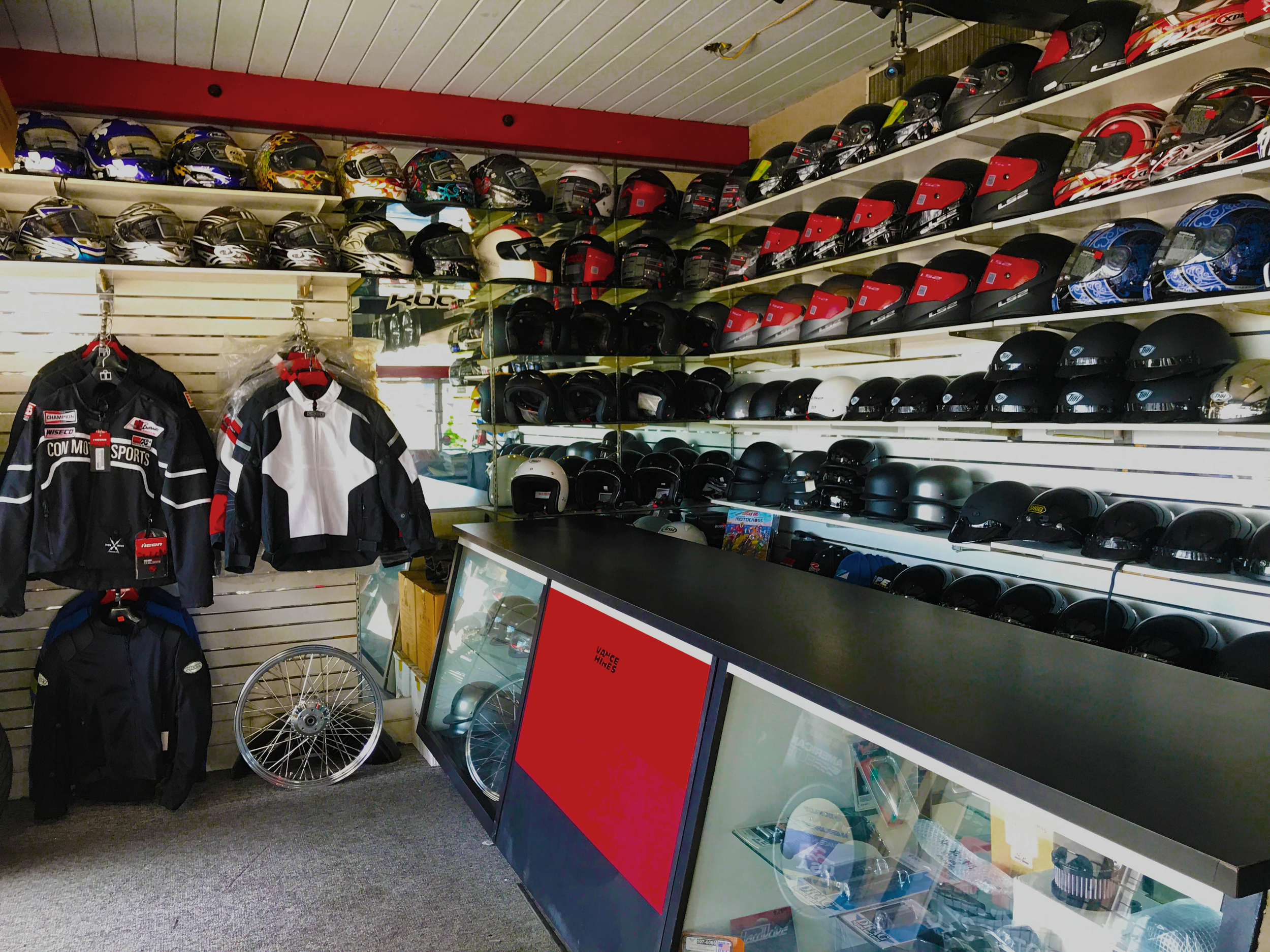Comprehending the Crucial Parts of a Motorbike: A Comprehensive Overview for Enthusiasts
For motorbike fanatics seeking to elevate their riding experience and guarantee their bikes run smoothly, understanding the necessary elements of a motorcycle is extremely important. Each aspect, from the engine's complex functions to the vital duty of the stopping devices, not only influences performance but additionally safety and security and comfort. This overview will certainly stroll with the essential components that every cyclist need to know with, enabling notified options in both upkeep and possible upgrades. As we start this expedition, one must ask: how does each component communicate to produce the seamless experience every fanatic looks for?
Engine Parts

The camshaft plays a critical duty in managing the timing of the engine's shutoffs, making sure the precise opening and closing needed for efficient gas and air intake, in addition to exhaust expulsion. This timing is crucial to keeping optimal engine efficiency and efficiency. In addition, the carburetor or fuel shot system, depending on the motorbike version, is in charge of blending air with fuel in the appropriate proportion for combustion.
The cooling system, either air or liquid-based, works to preserve the engine's temperature level within functional limits, preventing getting too hot and making sure long life - motocross gear. Each part, thoroughly designed and integrated, contributes to the smooth procedure of the engine, specifying the bike's power output and overall performance
Transmission System
Essential to the motorbike's capability, the transmission system makes certain efficient power transfer from the engine to the wheels. This system makes up a number of important components, consisting of the clutch, transmission, and last drive, each playing an important duty in equating the engine's power right into activity. The clutch, typically operated by a hand bar, offers to involve and disengage the engine from the transmission, permitting smooth gear modifications and regulated acceleration.
The gearbox, typically described as the transmission appropriate, consists of a collection of equipments that motorcyclists can by hand move with to change the bike's rate and torque outcome. These equipments are prepared in a series that makes it possible for the motorcycle to increase smoothly and maintain ideal engine efficiency throughout various speeds. Most bikes use a consecutive transmission, requiring the biker to move equipments in a predetermined order.
Braking Devices
While recognizing the transmission system is crucial to utilizing a motorcycle's power, just as important is the ability to regulate and quit that power successfully, which is where braking mechanisms come right into play. Brakes are vital for security and performance, giving the biker with the essential control to navigate different surfaces and conditions. Generally, motorcycles include two sorts of braking systems: disc brakes and drum brakes.
Disc brakes are more widespread in contemporary bikes as a result of their remarkable efficiency. They contain a brake disc, caliper, and pads. When triggered, the caliper presses the brake pads versus the rotating disc, converting kinetic power into warmth, thus slowing the wheel. This system supplies much better warm dissipation, regular efficiency, and boosted stopping power, especially in wet problems.
Conversely, drum brakes, though much less usual, are still found in some motorbikes. They function by pushing brake footwear versus the inner surface area of a drum connected to the wheel. While typically much less reliable in warmth dissipation and stopping power, drum brakes are simpler and extra affordable.
Recognizing these braking systems' nuances allows motorcyclists to keep their bikes properly and appreciate the engineering that makes sure effective and risk-free quiting.
Suspension and Guiding
Suspension and guiding systems are important elements that considerably influence a bike's handling and experience convenience. visit this site The suspension system, consisting of forks at the front and shock absorbers at the back, absorbs road abnormalities, improving stability and control. Front forks, inverted or commonly telescopic, compress and rebound to minimize effects, while rear shock absorbers maintain tire call with the roadway, vital for traction and safety.
Steering, centered around the handlebars, connects the rider to the bike's directional control. The guiding head bearings make certain smooth procedure, enabling accurate maneuverability. Proper placement and upkeep of these bearings are critical for foreseeable guiding feedback and reducing rider tiredness.
The suspension's adjustability is one more crucial aspect; preload, damping, and rebound settings enable personalization to suit numerous riding designs and conditions. This versatility is important for optimizing performance, whether browsing urban roads or dealing with rugged tracks. Developments like electronic shock absorber advice use real-time adjustments, enhancing ride top quality throughout varied terrains.

Electrical Equipments
After making certain a regulated and smooth experience via reliable suspension and guiding systems, focus turns to the electrical systems, a critical facet of modern-day motorbikes. These systems play an important duty not only in starting the engine yet likewise in powering different components that boost the performance and security of the bike.
At the heart of a motorbike's electric system is the battery, which shops electrical energy needed for beginning the engine and powering auxiliary systems - motorcycle parts nz. The generator or generator, paired with the rectifier-regulator, ensures the battery stays billed while the bike functions, converting mechanical power right into electrical energy and maintaining voltage levels
The ignition system, one more important part, is in charge of firing up the air-fuel combination in the engine's cyndrical tubes. Modern motorcycles commonly make use of an electronic ignition system, providing better performance and reliability contrasted to typical systems.
Lighting systems, consisting of headlights, tail lights, and signs, are likewise essential, making certain presence and security for the cyclist. Extra electronic components such as sensors, control systems, and displays contribute to advanced features like fuel shot monitoring, anti-lock stopping systems (ABS), and digital dashboards, further enhancing the riding experience.
Final Thought
A detailed understanding of a bike's vital elements, including the engine, transmission system, stopping systems, suspension, steering, and electric systems, is important for enthusiasts aiming to optimize efficiency, safety, and convenience. Mastery of these aspects permits notified choices concerning upkeep and upgrades, ultimately improving the riding experience. By integrating this understanding, riders can guarantee their bikes operate at peak efficiency and dependability, thereby optimizing both pleasure and longevity of their automobiles.
For motorcycle lovers looking to elevate their riding experience and guarantee their bikes run smoothly, understanding the crucial elements of a bike is extremely important.Integral to the bike's capability, the transmission system guarantees effective power transfer from the engine to the wheels.While recognizing the transmission system is key to taking advantage of a motorbike's power, just as vital is the ability to control and stop that the original source power successfully, which is where stopping mechanisms come into play. Normally, bikes feature two kinds of stopping systems: disc brakes and drum brakes.
A comprehensive comprehension of a motorbike's necessary parts, consisting of the engine, transmission system, stopping devices, suspension, guiding, and electric systems, is indispensable for lovers intending to enhance efficiency, safety, and convenience.
 Ralph Macchio Then & Now!
Ralph Macchio Then & Now! Jason J. Richter Then & Now!
Jason J. Richter Then & Now! Danica McKellar Then & Now!
Danica McKellar Then & Now! Hailie Jade Scott Mathers Then & Now!
Hailie Jade Scott Mathers Then & Now! Burke Ramsey Then & Now!
Burke Ramsey Then & Now!